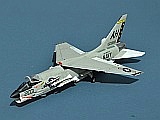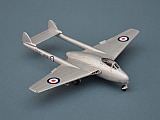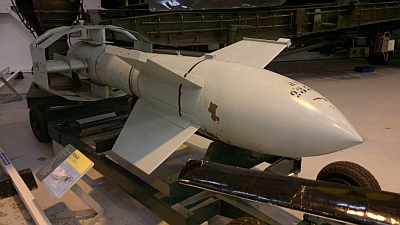![]()
![]() Selected
WW2 70th Anniversaries this month:
Selected
WW2 70th Anniversaries this month:
Between 2009 and 2015, I have set myself a general modelling theme based on selected 70th Anniversaries from WW2.
|
|
|
An example of the armour piercing Fritz X guided anti-ship glide bomb displayed at the RAF Cosford museum. This weapons was used successfully against the Allied landings in September 1943, with the first attack resulting in the loss of the Italian Battleship ROMA and 1250 of her crew.
Several
other ships, including the Battleship HMS WARSPITE, and cruisers HMS
UGANDA ,USS SAVANNAH and USS PHILADELPHIA were also damaged by Fritz
X weapons during the Salerno landings, although they did not sink. |
|
VF-162 "The Hunters", USS ORISKANY, Yankee Station, Gulf of Tonkin 1966.
Hasegawa, 1/72.
Having produced one of the most successful naval aircraft of WW2 (the F-4U Corsair), Vought went through a difficult patch in the early 1950s, with several innovative aircraft designs failing to make an impact. A government-directed factory move from the east coast to the west coast to reduce national strategic vulnerabilities did not help, but Vought fought back spectacularly with the superb F-8 Crusader design, the USN's last aircraft designed with gun armament as its main weapon.
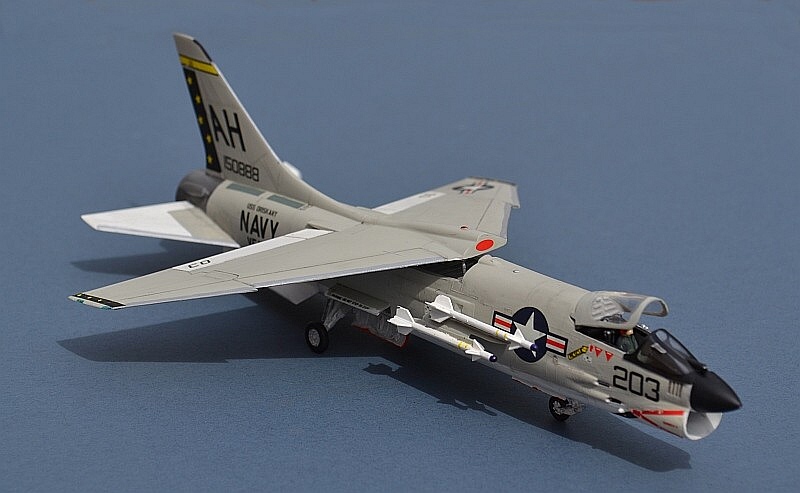
An innovative variable incidence wing design reduced landing speed and allowed the pilot to keep the nose lower when landing (assisting visibility), yet allowed creditable supersonic speeds to be maintained in flight. After a remarkably short and successful development period, the Crusader gave excellent service with the US Navy and Marines, particularly throughout the Cuban Crisis and Vietnam War, then in its reconnaissance role, right into the late 1980s. At 19:3, the Crusader would be credited with the best kill ratio of any American type in the Vietnam War, although a total of 170 Crusaders would be lost to other causes, including AA fire during the war.
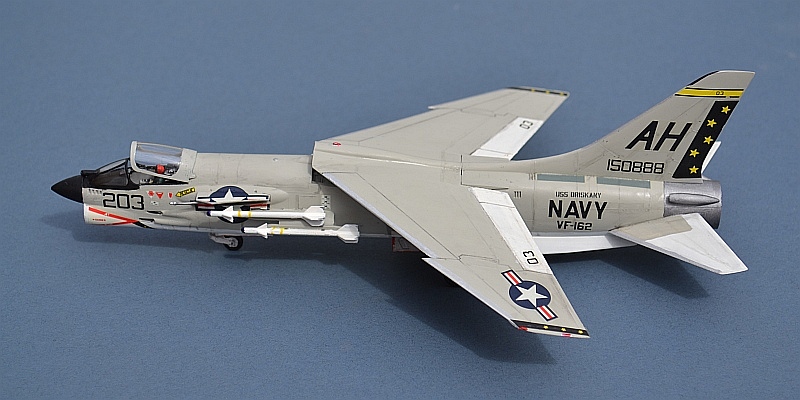
In fact, most Crusader combat kills in Vietnam were the result of missile engagements rather than the 4x20mm Colt canons not the guns. Several types of AIM9 sidewinder missile were used, including the original AIM-9B, the AIM-9C radar equipped version unique to the Crusader and the definitive AIM-9D, credited with 10 MiGs shot down. Despite the variable incidence wing, Crusaders were notoriously difficult to land on a carrier - large ventral strakes were added to improve directional stability, but castoring and very soft nose gear arrangements made any landing an alarming sight with the aircraft swerving along the deck with its cockpit close to the ground.
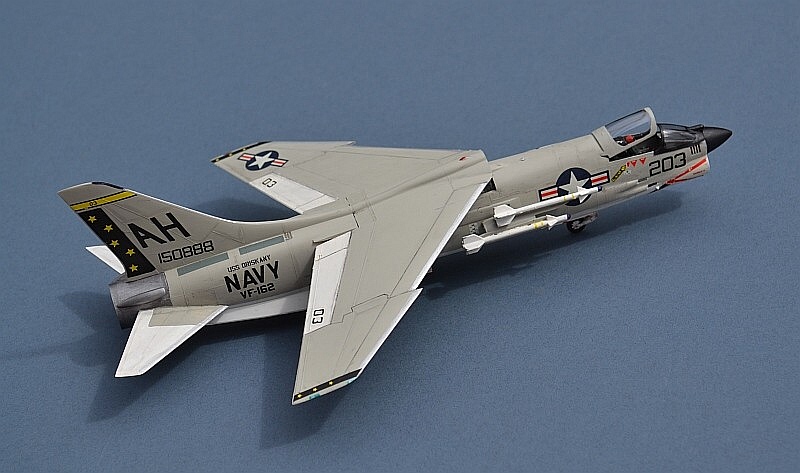
The Hasegawa Crusader is a reasonable model that assembles without drama and looks good when finished. My kit was issued in the 1980s, but it is older than this and really isn't up to modern standards. Panel lines are raised, whilst cockpit detail and the ejector seat are very basic (sidewalls and decals). The very prominent intake is also a gaping see-through hole into the fuselage with only about 15mm of intake tunnel and no blanking plate at the end.
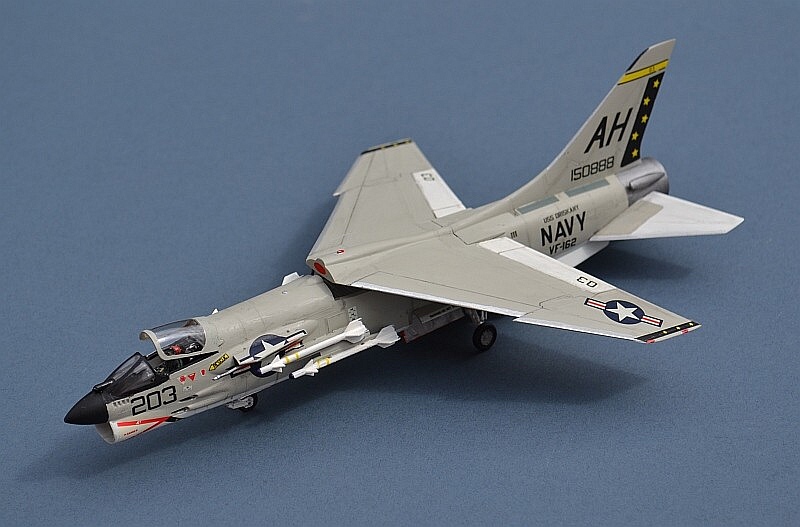
The kit provides the option to raise the distinctive variable incidence wing, but not to lower flaps and slats - unfortunately one was not possible without the other on the real thing, but it is such a distinctive feature of this type that I felt it would be a shame to omit it. Alternative decals are provided in the box for a US Marines aircraft with additional wing pylons and bomb load for the ground attack role.
Link to more US Navy Aircraft on my Friends & Allies Pages
HMS HERON Station Flight, RNAS Yeovilton, 1954.
Revell (ex-Heller), 1/72.
Although too late to see active combat in WW2, the initial flight of DeHavilland's Vampire prototype took place 70 years ago this month in September 1943, with the first production aircraft entering RAF service in April 1945. Amongst other firsts, the single seat naval Vampire variant was the first jet aircraft ever to land on an aircraft carrier. Originally designed as a fighter, it also proved to be highly versatile in the ground attack, night fighter and trainer roles. Unfortunately the poor throttle response from its DeHavilland Goblin jet engine ruled it out as a front line naval aircraft, although the Fleet Air Arm used the type as an advanced trainer,including the carrier capable F.20 Sea Vampire. Over 3,000 Vampires were built, seeing service with the air arms of no less than 32 nations and making it one of the most successful British combat aircraft exports of all time.
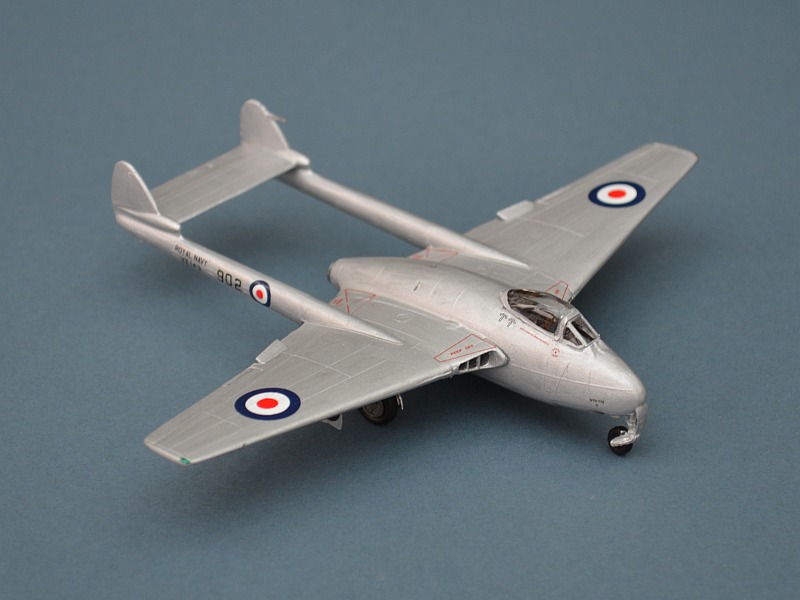
To go with my twin-seat Vampires from earlier this year, this is my second go at building a single-seat Heller Vampire. My first came in an Airfix box and was converted to a Sea Vampire. This more recent one has been re-issued this year by Revell. Its a reasonable little kit, certainly better than the ancient Frog version and possibly still better than some of the more recent high-tech kit issues that are reported to have significant shape problems.
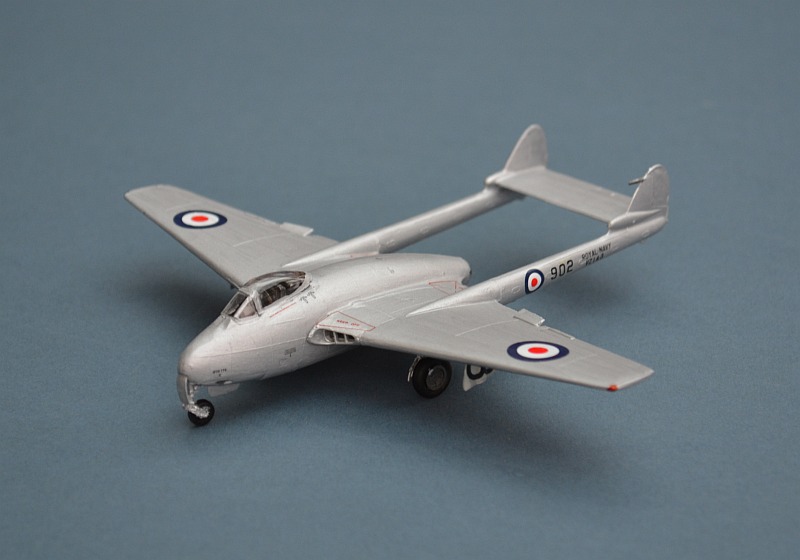
Cockpit detail is sparse but adequate, and the only really tricky areas are getting the two booms aligned, plus the fact that it is a determined tail sitter (the Sea Vampire was filled with lead, to no avail, so I have cheated and used a prop) . Decals are from the spares box (and reminded me that I really hate cutting out and applying individual serial numbers!!!), based on an old Mike Keep drawing in Scale Aircraft Modelling depicting a Vampire FB.5 which was used as a Station Flight aircraft at RNAS Yeovilton in the 1950s.
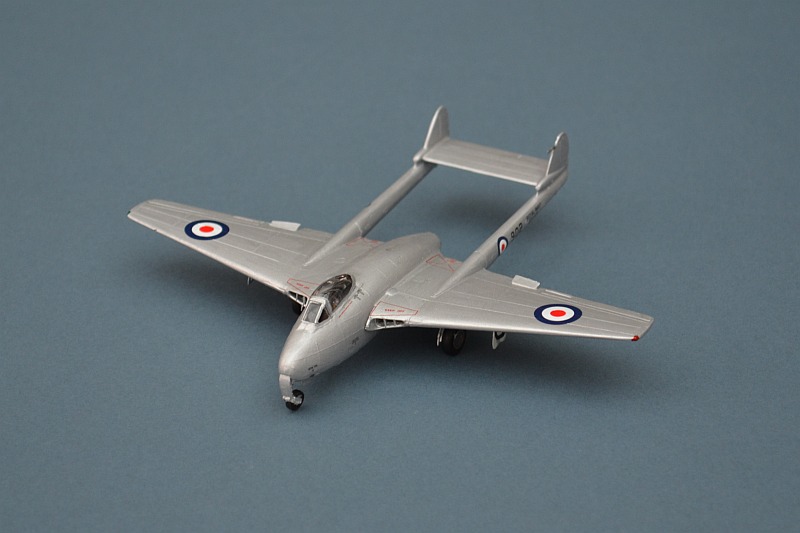
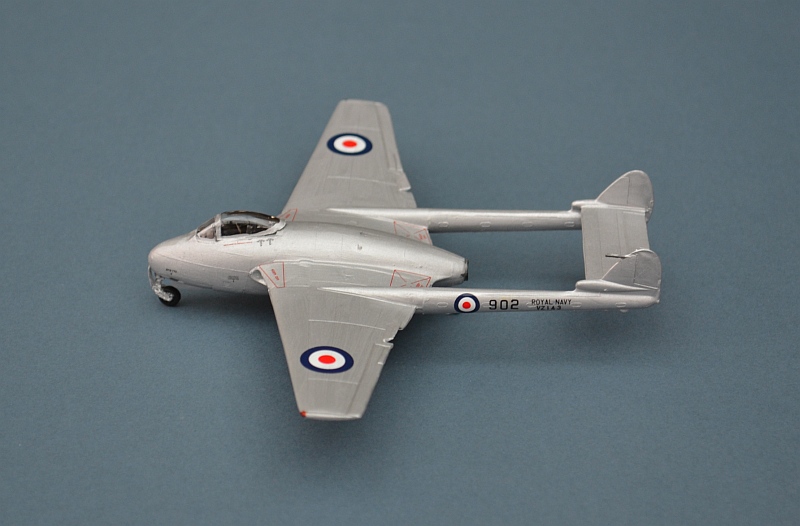
Link to more Vampires and other RN aircraft on my RN Jets Pages
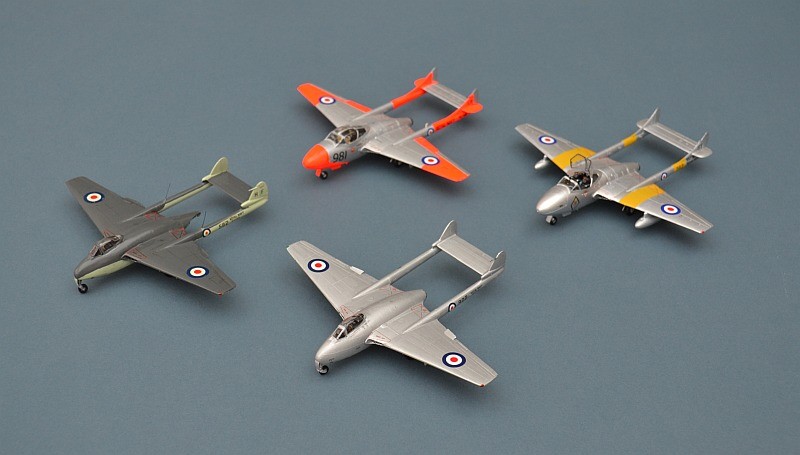
Link to previous month Link to Next Month
www.gengriz.co.uk
